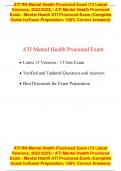
Avoid substances: Avoid using substances such as alcohol, cannabis, or drugs, as they can interfere with medication and worsen the symptoms of bipolar disorder.This can help your healthcare provider better understand your condition and track any patterns in your episodes. Note down your symptoms: Maintain a journal in which you note down your mood and symptoms every day.You may have to repair some relationships that were damaged during the manic episode.
 Seek social support: Connect with friends and family members and let them know how you’re feeling and how they can help. As the episode comes to an end, it can be helpful to start rebuilding your routine by maintaining consistent bedtimes and mealtimes and exercising regularly. Build a healthy routine: It can sometimes be difficult to maintain a healthy routine when you’re in the midst of a manic episode-you might not sleep or get very little sleep for days at a time, according to Dr. Avoid busy, loud, or brightly decorated places and opt for more relaxing and soothing places and activities instead.
Seek social support: Connect with friends and family members and let them know how you’re feeling and how they can help. As the episode comes to an end, it can be helpful to start rebuilding your routine by maintaining consistent bedtimes and mealtimes and exercising regularly. Build a healthy routine: It can sometimes be difficult to maintain a healthy routine when you’re in the midst of a manic episode-you might not sleep or get very little sleep for days at a time, according to Dr. Avoid busy, loud, or brightly decorated places and opt for more relaxing and soothing places and activities instead.  Opt for calming environments: Stimulating places and activities can trigger mania and prolong it. Don’t stop taking the medication without discussing it with them, even if you’re feeling better. Inform your healthcare provider if you experience any side effects. It’s important to take your medication regularly, exactly as prescribed by your healthcare provider. Take your medication consistently: Medication may be able to reduce the symptoms of mania, end the manic episode faster, help you regain normal functioning, prevent a depressive episode, and stabilize your mood. Your healthcare provider can also provide therapy and support as you deal with the aftermath of the manic episode or start experiencing a depressive episode. Daramus recommends seeing your healthcare provider immediately as they can prescribe medication or adjust the medication you’re taking. Becoming a danger to yourself or the people around you. Displaying restless behaviors, such as fidgeting and pacing. Experiencing symptoms of psychosis such as hallucinations and delusions, and being unable to distinguish between what’s real and what isn’t. Developing obsessions and pursuing them relentlessly, no matter how unviable they are. Having beliefs of grandiosity and feeling exceptionally confident, talented, powerful, important, and invincible. Having an increased appetite for food, alcohol, and other pleasures. Daramus, this could involve partying too hard, spending too much money, driving too fast, making risky investments, behaving aggressively, or taking on ambitious or unrealistic new projects. In the past, people referred to bipolar disorder as mania disorder, since mania is one of the primary signs of bipolar disorder.
Opt for calming environments: Stimulating places and activities can trigger mania and prolong it. Don’t stop taking the medication without discussing it with them, even if you’re feeling better. Inform your healthcare provider if you experience any side effects. It’s important to take your medication regularly, exactly as prescribed by your healthcare provider. Take your medication consistently: Medication may be able to reduce the symptoms of mania, end the manic episode faster, help you regain normal functioning, prevent a depressive episode, and stabilize your mood. Your healthcare provider can also provide therapy and support as you deal with the aftermath of the manic episode or start experiencing a depressive episode. Daramus recommends seeing your healthcare provider immediately as they can prescribe medication or adjust the medication you’re taking. Becoming a danger to yourself or the people around you. Displaying restless behaviors, such as fidgeting and pacing. Experiencing symptoms of psychosis such as hallucinations and delusions, and being unable to distinguish between what’s real and what isn’t. Developing obsessions and pursuing them relentlessly, no matter how unviable they are. Having beliefs of grandiosity and feeling exceptionally confident, talented, powerful, important, and invincible. Having an increased appetite for food, alcohol, and other pleasures. Daramus, this could involve partying too hard, spending too much money, driving too fast, making risky investments, behaving aggressively, or taking on ambitious or unrealistic new projects. In the past, people referred to bipolar disorder as mania disorder, since mania is one of the primary signs of bipolar disorder. 
Talking a lot more than usual and very fast, making it difficult for others to keep up Typically, mania is a symptom of bipolar disorder, a condition characterized by periods of mania called manic episodes that experienced periodically.Not needing much sleep and feeling energetic, despite not having slept much in days.Having racing thoughts and ideas that are difficult to pin down.Having a high level of energy and being very active, to the point of feeling wired and doing multiple things at a time.Feeling either euphorically happy or irritable and disagreeable.







 0 kommentar(er)
0 kommentar(er)
